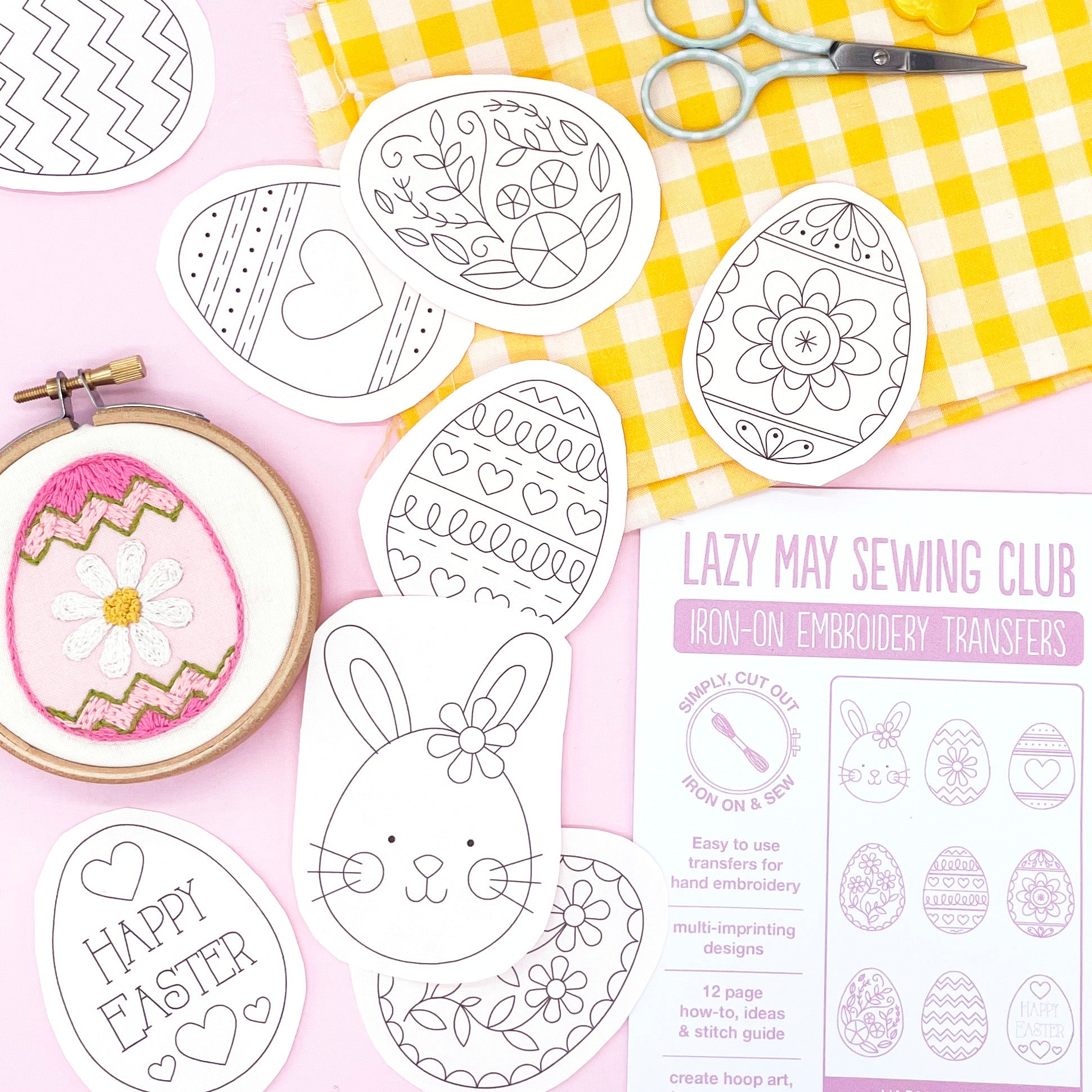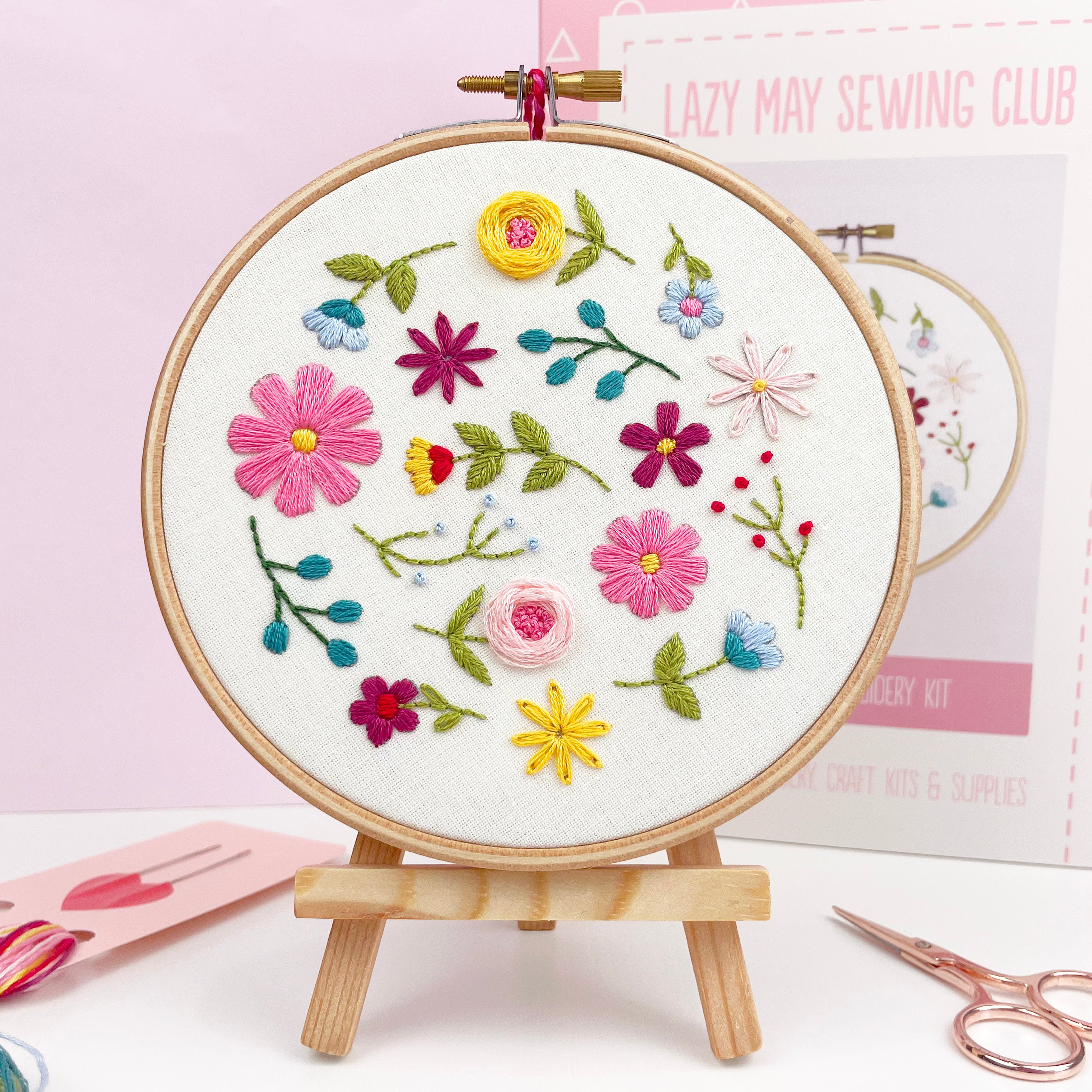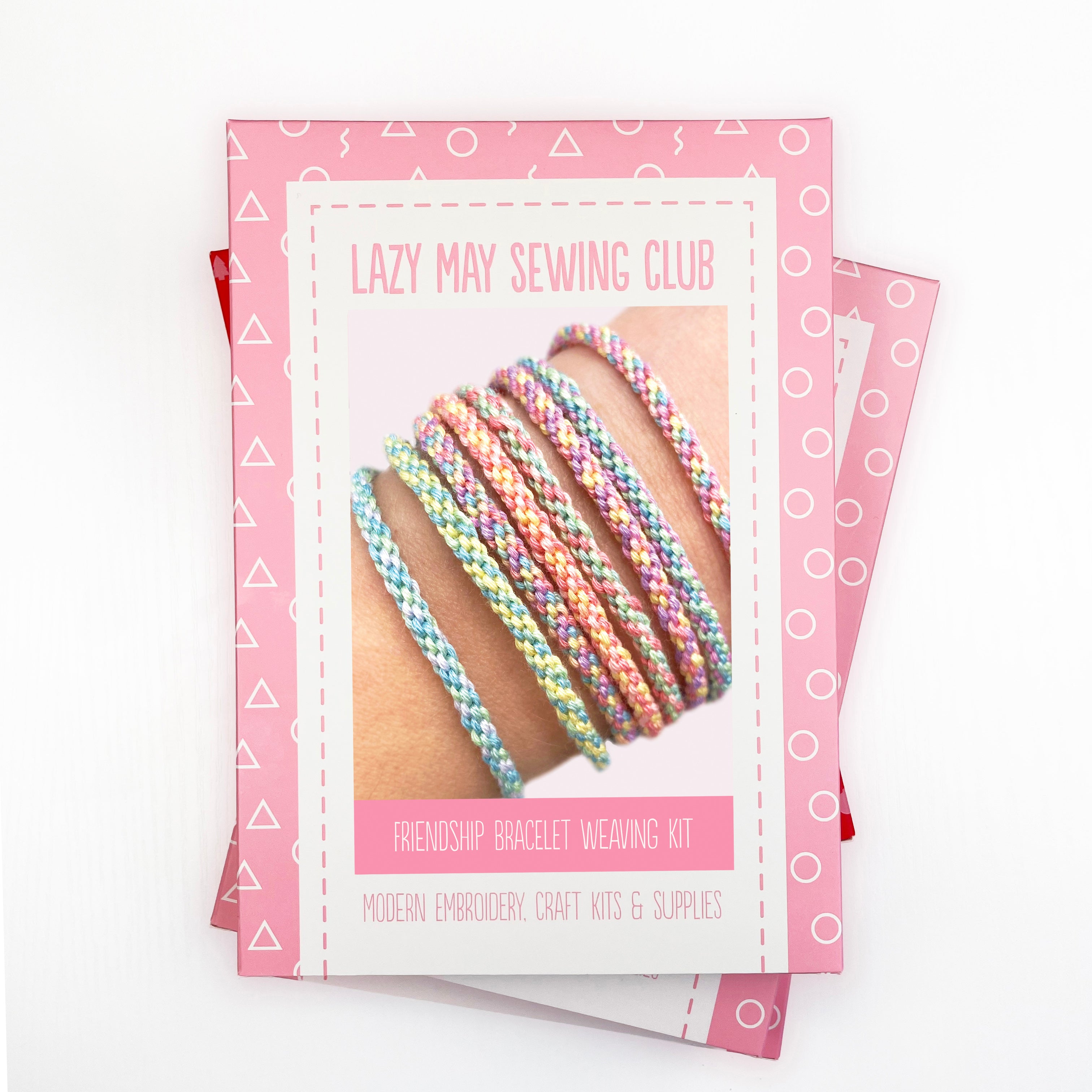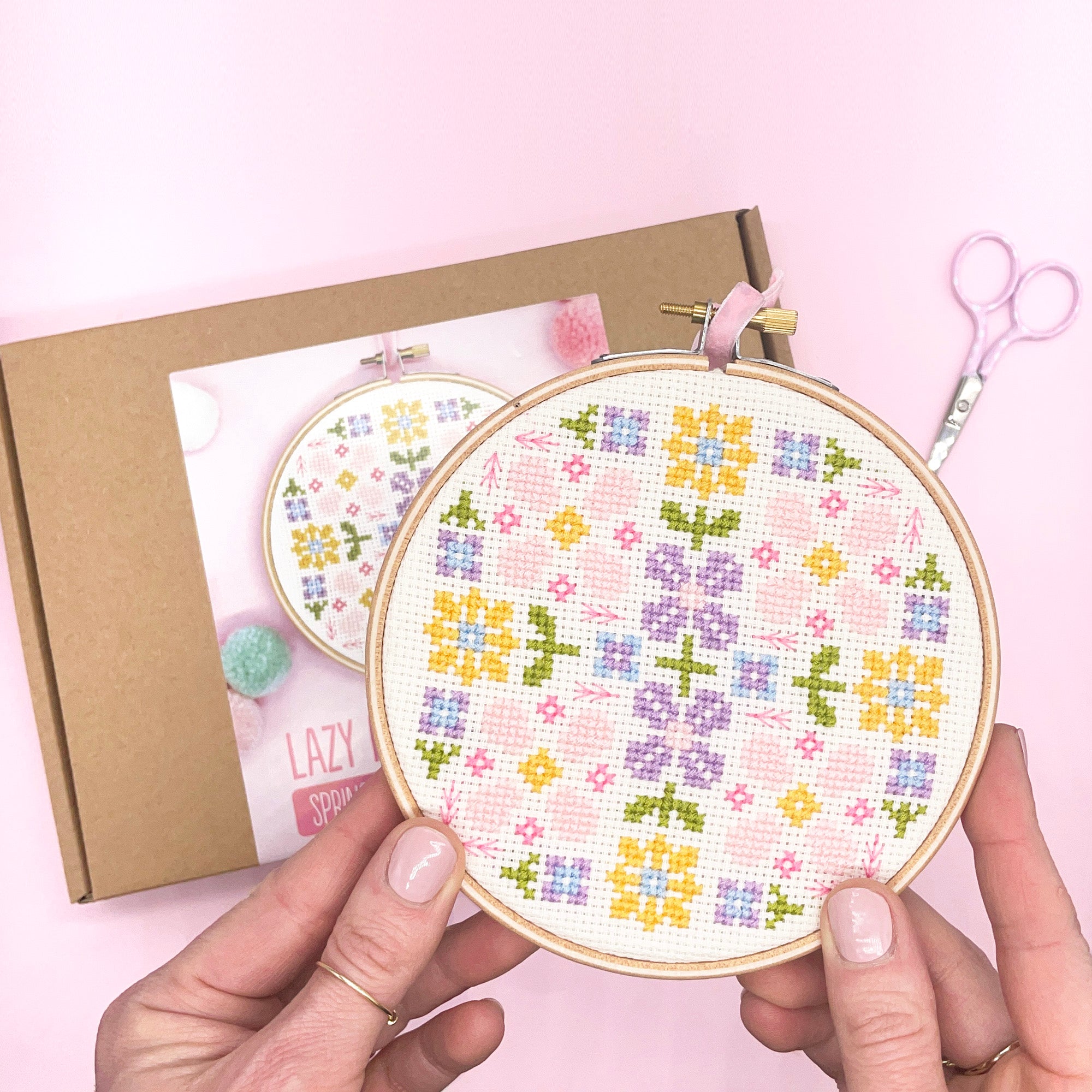So you want to learn hand embroidery?
Embroidery is a great craft to learn, it's fun, with endless possibilities for creativity and yet the basic techniques are simple to learn and the tools needed are minimal. It is a calming, relaxing, inexpensive and portable hobby. So what are you waiting for!
What Equipment do I need to Begin Embroidery?
The answer is you hardly need any embroidery equipment to get started and, great news, the things you do need are easily available and relatively inexpensive.
Here's some info on the basics:
Embroidery Needles

You can find needles online, in craft shops, or the supermarket.
Packets of needles can be labeled as embroidery or crewel needles and they come in a variety of sizes. Embroidery needles have a larger eye than standard sewing needles to make them easier to thread, as in embroidery you often stitch with multiple strands of thread.
Packets of needles in mixed sizes like the ones shown in the images below are readily available, these are great as you can try a few to see which size you prefer.
A mixed packet of size 5-10 embroidery or crewel needles will give you plenty of options and you soon will find which size suits you best.
What size needle should I use?
I like to stitch with a size 7 embroidery needle as it is thin and sharp but still has a fairly large eye and is not too tricky to tread.
You might also find the table below useful, it shows how many strands of embroidery thread can easily be threaded through each needle:
| Needle Size | Max. Strands of thread |
| 3 | 6 |
| 4 | 5 |
| 5 | 4 |
| 6/7 | 3 |
| 8/9 | 2 or 1 |
In this table 3 is the biggest need and 9 is the smallest. The smaller the needle the smaller the hole it will make, it will be easier to stitch accurately with a smaller needle.
Below are some types of needle you may see, you can also find a selection of great quality needles in the supply section of our shop.




Embroidery Thread
There are many different brands of embroidery thread to choose from, three of the most popular brands of embroidery threads are DMC, Anchor and Madeira threads.
These are the brands you will most often find stocked in craft and sewing shops in the UK.
All three brands produce high-quality soft threads in over 500 different colours. The type of threads they produce are known as '6 -stranded cotton', which is the name for standard embroidery thread.
Stranded cotton is a superb thread for beginners to start with as it is very easy to sew with and to handle.
Stranded thread refers to the fact that each strand of thread is made up of 6 thinner strands that are twisted together.
The 6 threads can be separated and used in smaller numbers, for example, 3 of the 6 thread, to create different stitch widths and effects.
Embroidery patterns will state how many threads you need to stitch each part of a design.
We use Madeira threads in all our kits and thread palettes, the threads are beautifully soft and don't tangle easily.




There are also specialist threads such as metallic thread, embroidery thread with glittery strands, embroidery thread that contains multiple colours and even glow-in-the-dark thread.
You can buy these embroidery threads online, in high street craft shops and large stores like Hobby Craft in the UK.
You can also buy threads in larger multipacks from crafts stores or online, these threads are good as they are often significantly cheaper than buying thread individually. However, the quality is sometimes not as good and you might find yourself dealing with a few more knots.
Want to learn embroidery?
From scissors to starter kits, we’ve got everything you need to begin your embroidery journey.
Shop NowEmbroidery Hoops
Embroidery hoops are inexpensive and make embroidery so much easier, common types are made from wood or metal and plastic.
For most embroidery projects a wooden hoop of around 15cm (5") to 20cm (7") is a good choice.
Mini hoops of around 3" are great fun to stitch too, great for stitching quick projects to hang up around the home.
Getting you fabric tight in the hoop if one of the most important steps in embroidery, we have a full guide to setting up your hoop here.
If you can get your fabric stretched tight like a drum skin you will find stitching much easier and there will be no wrinkles or puckers in your finished embroidery piece.

A couple of final tips on hoops:
- If you are left handed place the end of the screw that you turn on the left, if you are right handed place it on the right.
- You can tighten the screw with pilers or a screw diver if you find it difficult to do with your fingers.
- Every time you pick up your hoop to sew double check the screw is tight and the fabric is taut.
- Spend time setting up your hoop, it is well worth it!
Embroidery Fabric
You can embroider on to any fabric but some of these easiest ones to work with are cotton, calico or linen as they are not too stretchy.
The fabric can be plain or patterned but if you would like to use your transfers directly on the fabric choose lighter colours so the lines of the pattern show up clearly.
Good quality quilting fabric is great for embroidery, brands to look out for a 'Bella Moda Solids' (its what we use in all out kits) or Kona cotton, both of this brands have a huge range of colour choices and are great quality.
Purchasing a good quality pack of fat quarters is also brilliant for filling your embroidery basket. This will give you a choice of fabric for multiple projects. The fat quarters shown below are from Hobbycraft.
Stretchy fabrics are fine to work with if you use an embroidery stabiliser as mentioned above.


Embroidery Scissors
A small sharp pair of scissors are a must for embroidery. Your scissors will need to be small enough to precisely trim away ends of thread from the back of your hoop.
TOP TIP: Don't use your embroidery scissors for anything other than embroidery, cutting paper or card may blunt them after a while and you want them to stay super sharp.


Needle Threaders
Needle threaders are not essential for embroidery but they are inexpensive and helpful if you struggle to thread your needle.
Simply post the threader through the eye of the needle, slide the thread though the wire loop and pull the threader back through the eye.


I hope you have found this introduction to embroidery equipment useful.





